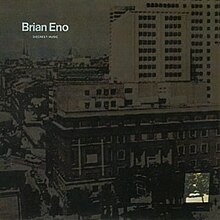
Ambient music is a genre of music that emphasizes tone and atmosphere over traditional musical structure or rhythm. It may lack net composition, beat, or structured melody. It uses textural layers of sound that can reward both passive and active listening and encourage a sense of calm or contemplation. The genre is said to evoke an "atmospheric", "visual", or "unobtrusive" quality. Nature soundscapes may be included, and the sounds of acoustic instruments such as the piano, strings and flute may be emulated through a synthesizer.

Richard Gavin Bryars is an English composer and double bassist. He has worked in jazz, free improvisation, minimalism, historicism, avant-garde, and experimental music.

Another Green World is the third solo studio album by Brian Eno, released by Island Records on 14 November 1975. The album marked a transition from the rock-based music of Eno's previous releases toward the minimalist instrumentals of his late 1970s ambient work. Only five of its fourteen tracks feature vocals, a contrast with his previous vocal albums.
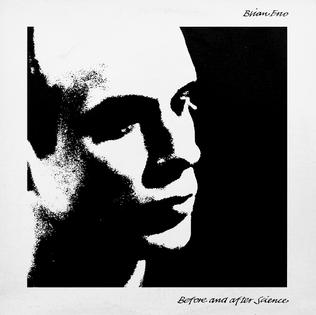
Before and After Science is the fifth solo studio album by Brian Eno, originally released by Polydor Records in December 1977 in the United Kingdom and by Island U.S. soon after. Produced by Eno and Rhett Davies, it is the first of Eno's popular music works to be published under his full name.

Ambient 1: Music for Airports is the sixth studio album by Brian Eno, released in 1978 by Polydor Records. It is the first of Eno's albums released under the label of ambient music, a genre of music intended to "induce calm and a space to think" while remaining "as ignorable as it is interesting". While not Eno's earliest entry in the style, it is credited with coining the term.
Frippertronics is a tape looping technique used by English guitarist Robert Fripp. It evolved from a system of tape looping developed in the electronic music studios of the early 1960s by composers Terry Riley and Pauline Oliveros and made popular through its use in ambient music by composer Brian Eno, as on his album Discreet Music (1975). The effect is now routinely found in many commercial loop station guitar digital effects boxes such as the Boss RC-3.

Harold Montgomory Budd was an American music composer and poet. Born in Los Angeles and raised in the Mojave Desert, he became a respected composer in the minimal music and avant-garde scene of Southern California in the late 1960s, and later became better known for his work with figures such as Brian Eno and Robin Guthrie. Budd developed what he called a "soft pedal" technique for playing piano, with use of slow playing and prominent sustain.
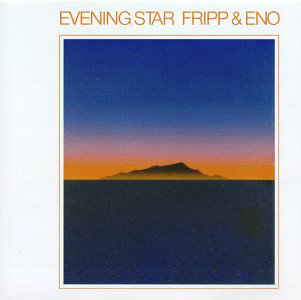
Evening Star is the second studio album by British musicians Robert Fripp and Brian Eno. It was recorded from 1974 to 1975 and released in December 1975 by Island Records.

Ambient 2: The Plateaux of Mirror is a 1980 studio album by Harold Budd and Brian Eno. A work of ambient music, it is the second installment of Eno's Ambient series, which began in 1978 with Ambient 1: Music for Airports. Ambient 2 consists mainly of minimalist composer Budd playing improvisational piano in soundscapes produced by Eno. The album received positive reviews and led to Budd and Eno collaborating again for the sonically similar The Pearl (1984).
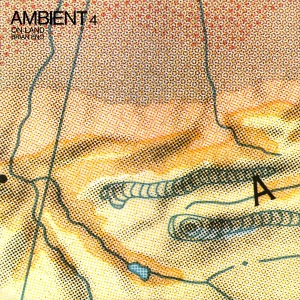
Ambient 4: On Land is the eighth solo studio album by Brian Eno, released in March 1982 by EG Records. It was the final edition in Eno's ambient series, which began in 1978 with the release of Ambient 1: Music for Airports. The album was released to critical acclaim, and is, along with the rest of the ambient series, recognised as a landmark album in the history of the ambient music genre.

Thursday Afternoon is the tenth solo studio album by Brian Eno, released in October 1985 on EG Records. Consisting of one 60-minute eponymous composition, it is the rearranged soundtrack to an 80-minute video production of the same title made in 1984.
Jesus' Blood Never Failed Me Yet is a 1971 composition by Gavin Bryars based on a loop of an unknown homeless man singing a brief improvised stanza. The loop was the singer's recollection of the chorus of a gospel hymn, by James M Black, published in 1911. Rich harmonies, comprising string and brass, are gradually overlaid over the stanza. The piece was first recorded for use in a documentary which chronicles street life in and around Elephant and Castle and Waterloo, in London. When later listening to the recordings, Bryars noticed the clip was in tune with his piano and that it conveniently looped into 13 bars. For the first LP recording, he was limited to a duration of 25 minutes; later he completed a 60-minute version of the piece for cassette tape; and with the advent of the CD, a 74-minute version. It was shortlisted for the 1993 Mercury Prize.
Fripp & Eno is a musical side-project composed of Brian Eno and Robert Fripp. The duo have released four studio albums, beginning with the 1973 album (No Pussyfooting). The music created by this pair is entirely instrumental and has made extensive use of Frippertronics, a tape delay technique, combined with Fripp's guitar, the Fripp Pedalboard and Frizzbox along with Eno playing various keyboards, synthesizers and modified Revox A77 tape recorders.

Brian Peter George Eno, also mononymously known as Eno, is an English musician, songwriter, record producer and visual artist. He is best known for his pioneering contributions to ambient music and electronica, and for producing, recording, and writing works in rock and pop music. A self-described "non-musician", Eno has helped introduce unconventional concepts and approaches to contemporary music. He has been described as one of popular music's most influential and innovative figures. In 2019, he was inducted into the Rock and Roll Hall of Fame as a member of Roxy Music.

(No Pussyfooting) is the debut studio album by the British duo Fripp & Eno, released in 1973. (No Pussyfooting) was the first of three major collaborations between the musicians, growing out of Brian Eno's early tape delay looping experiments and Robert Fripp's "Frippertronics" electric guitar technique.
This is the discography of the UK ensemble Icebreaker.
The Sinking of the Titanic is a work by British minimalist composer Gavin Bryars. Inspired by the story that the band on the RMS Titanic continued to perform as the ship sank in 1912, it imagines how the music performed by the band would reverberate through the water some time after they ceased performing. Composed between 1969 and 1972, the work is now considered one of the classics of British classical experimental music.
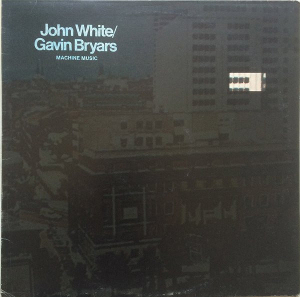
Machine Music is a 1978 album by John White and Gavin Bryars. The album was the eighth release on Brian Eno's Obscure Records.
Irma is a 1969 experimental opera by artist Tom Phillips, Fred Orton and Gavin Bryars.

Reflection is the twenty-eighth studio album by Brian Eno, released on 1 January 2017 on Warp Records. It is a piece of generative ambient music produced by Eno, which plays indefinitely via an app, modulating its output at different times of the day. A pre-recorded version of the album is available on CD and vinyl, which runs for 54 minutes. Digital streaming versions of the album update on a seasonal basis. It was nominated for the 2017 Grammy Award for Best New Age Album and was released to a positive acclaim by critics.
